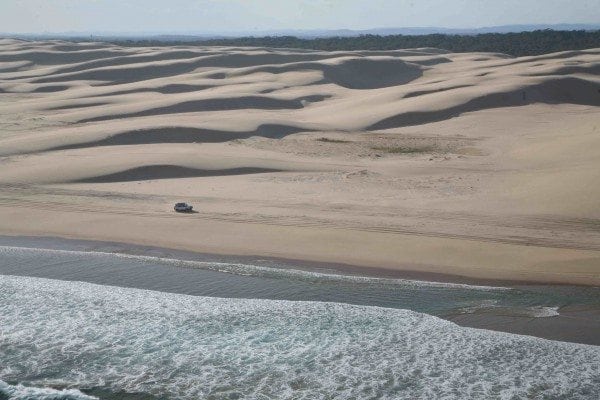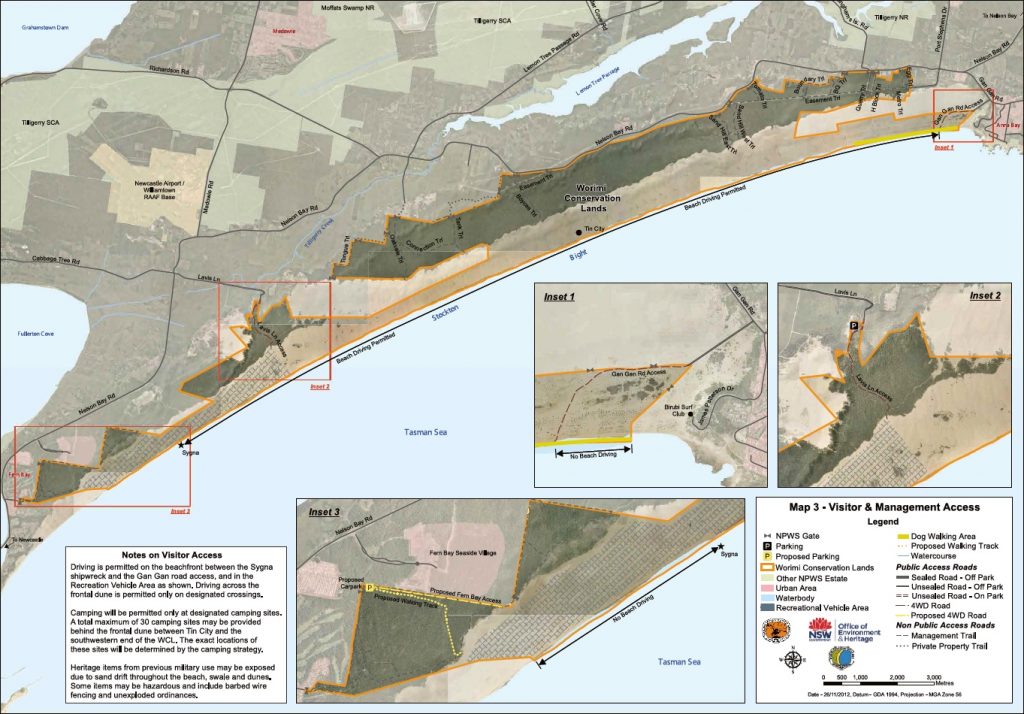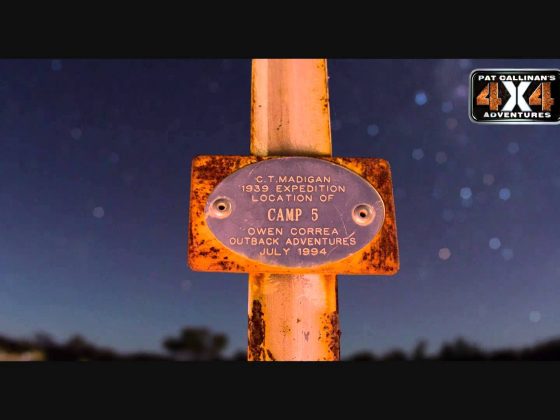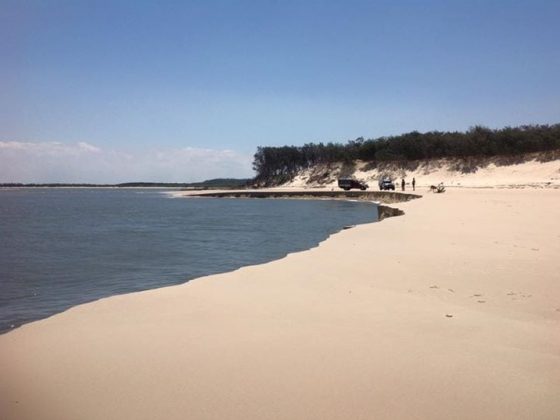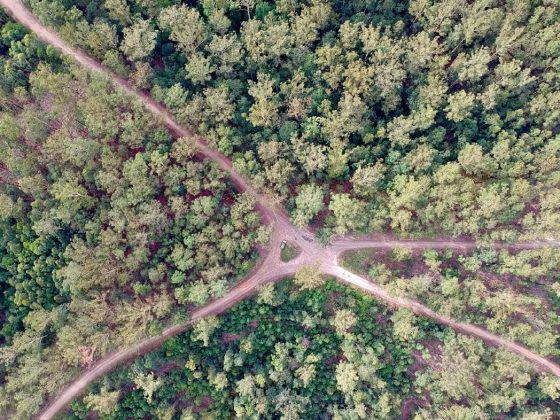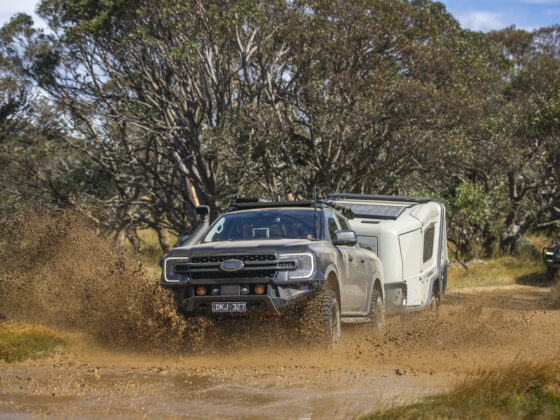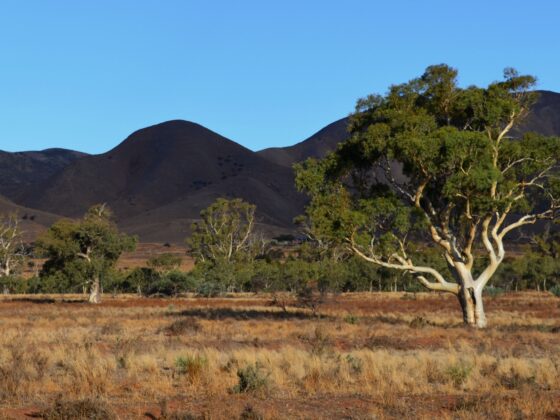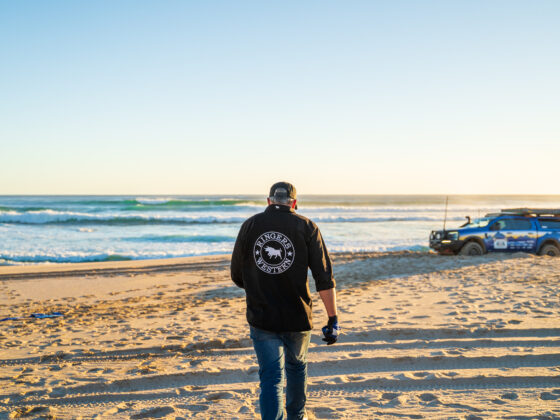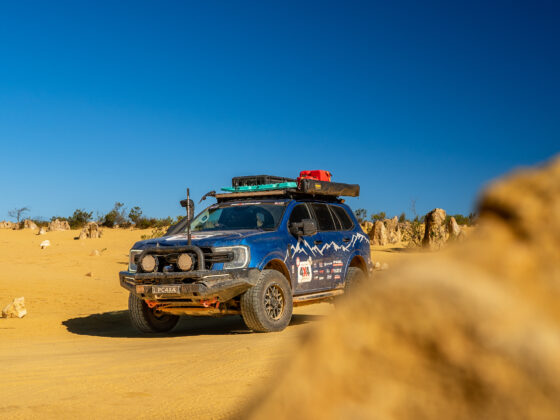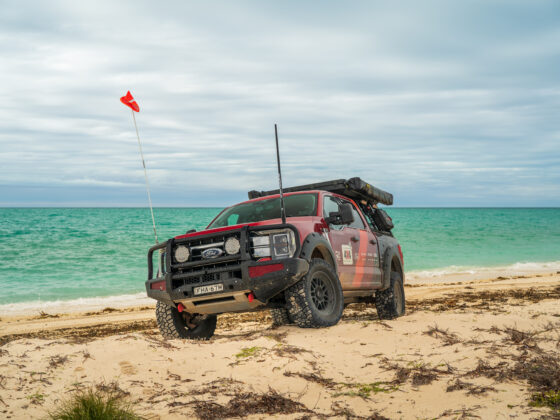After a long drafting process, the new plan of management for Stockton Beach has been released to the public. We’ve picked through the 100+ page document, and have listed down the important parts for 4WDers: access. Listed below are the management responses that the WCL (Worimi Conservation Lands) have drafted around Stockton Beach 4X4 access and camping.
CAMPING
1. Camping will be permitted only at designated sites in designated camping areas. The designated camping area or areas will be located south-west from Tin City, behind the beach and frontal dune.
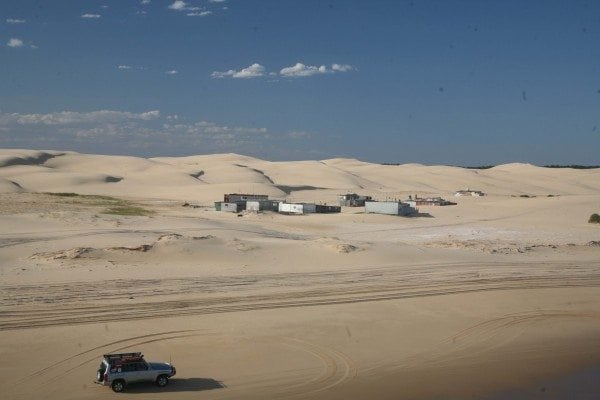
2. A camping strategy will be prepared to guide the establishment of a camping area or areas. The strategy will provide for:
- up to a combined total of 30 designated campsites
- adequate spacing between sites in each camping area so as to provide for separation between campers
- the number of campers up to maximum of eight per site
- the size of sites and number of vehicles and equipment that can be accommodated at each site
- provision of options for group camping for more than eight people
- designated vehicle and pedestrian access to sites
- protection of beach vegetation and limiting erosion
- interpretation of cultural and natural values
- maximum length of stay
- maintaining and managing the area and sites
- implementing a registration and booking system, including camping fees.
3. Fires will be permitted only in designated fireplaces. Only clean timber sourced from outside the WCL may be used. Firewood collection within the WCL, including driftwood, is prohibited.
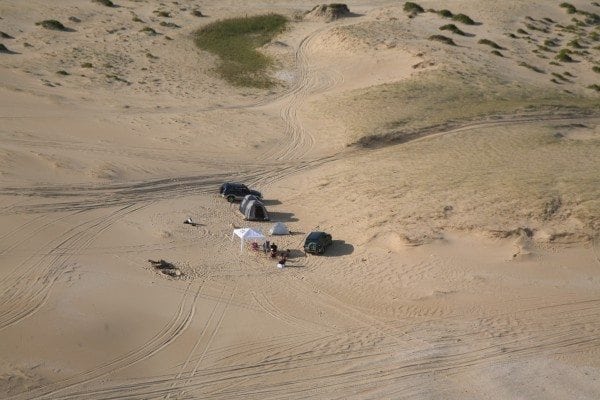
4. No domestic animals, including dogs, will be permitted at individual campsites or camping areas. Facilities or sites for camping with horses will not be provided.
5. All campers must bring their own camping toilet, and all camping sewage must be disposed of in an authorised facility.
6. Construct toilet facilities at the Lavis Lane entry at or in the immediate vicinity of the carpark, and if feasible consider incorporating a camping toilet dump point.
7. Participate in cooperative efforts with other agencies to develop appropriate camping toilet dump points in the vicinity of WCL entrances.
8. Due to the dynamic dune system and extent of sand drift, camping areas or sites may be temporary closed where use of or access to the sites will cause unacceptable impacts.
VEHICLE ACCESS
1. Public vehicle access will be permitted at the three designated vehicle accesses as shown on Map 3. All vehicles must have a Beach Vehicle Permit. Driving is permitted on the beachfront between the Sygna and the Gan Gan Road Access frontal dune crossing. Driving behind the beachfront is permitted:
- along defined routes to and from WCL designated vehicle accesses
- in the Recreation Vehicle Area
- along defined routes (including across the frontal dune) to and from Tin City and designated camping areas.
Driving outside these areas, or on Aboriginal cultural sites, beach vegetation, the frontal dune (except on designated frontal dune crossings) and on management trails is not permitted. Unregistered vehicles may not be operated or transported into the WCL.
2. Vehicle access across the frontal dune will be defined and, where necessary, formalised to protect the frontal dune.
NOTE: What’s a frontal dune? Check out this supplied image, below:
3. Monitor Aboriginal cultural sites and their exposure in those areas of the WCL where vehicles are permitted, and implement measures to protect sites from impacts of vehicles.
4. Work with Port Stephens Council in an effort to ensure vehicle access between the WCL and the Birubi Point Crown Reserve is managed to ensure the protection of Worimi cultural values and safety.
5. Continue to implement the beach vehicle permit system, and review the fee structure periodically in accordance with the Lease Agreement. Ensure the visitor communications strategy and associated education plan address the vehicle permit system.
6. Vehicle access to the WCL or identified sections of the WCL may be temporarily closed due to weather conditions that would lead to safety concerns or increased impacts from vehicle use. Examples include storm events that render sections of the beachfront impassable.
7. Monitor numbers of vehicles in the WCL, and investigate the carrying capacity of the beachfront and Recreation Vehicle Area for vehicle-based access. If necessary, implement techniques to manage the number of vehicles to be within capacity during peak periods.
8. Work cooperatively with NSW Police and adjoining land owners and managers to address illegal vehicle access and inappropriate driving.




